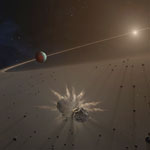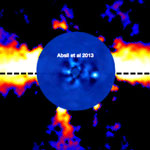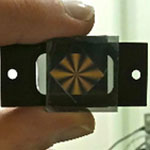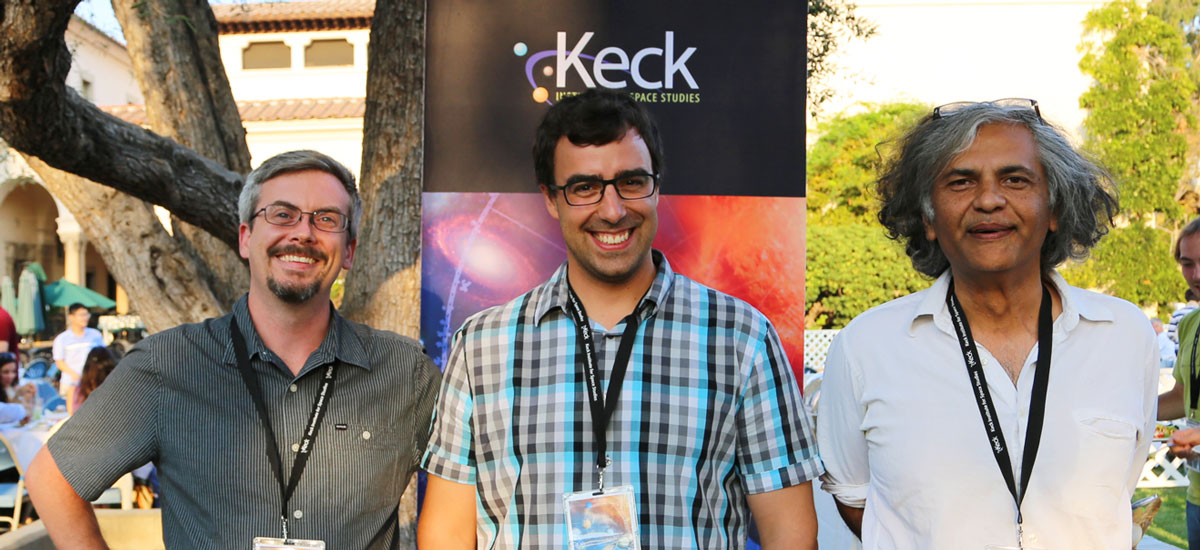Dimitri Mawet
KISS Pushes People Out of the Box
Soon after joining the faculty at Caltech, Dimitri Mawet was introduced to KISS (Keck Institute for Space Studies) by participating in one of its workshops. He was exposed to the unique way that KISS brings people together.

In 2010, with collaborators from Caltech, JPL and GSFC, Dimitri Mawet initiated an ambitious high contrast imaging follow-up of young stars identified by Spitzer (and WISE) to have strong IR excess emission at 70 (or 22) μm, indicative of a dusty debris disk, and thus of massive planetary systems, making such targets ideal for planet searches. Mawet's group have surveyed hundreds of stars using both Keck-NIRC2 and VLT-NACO. Dimitri was responsible for the Southern hemisphere observations, the common data reduction pipeline, common proper motion and statistical analysis. At its output are a full astrometric and photometric characterization of putative candidate companions, as well as de-biased detection limits.

Dimitri is involved in programs aiming at imaging well-known disk-bearing systems with unprecedented sensitivity and IWA, looking for new companions and/or associated signposts. Dimitri led comprehensive review of the challenge of proto-planet searches in star forming regions, focusing on this prototypical T Tauri star. He contributed to the confirmation of the planet around HD95086 by direct imaging, and his former PhD student J. Milli is currently leading a cutting-edge program to do imaging polarimetry of the famous debris ring of HR4796 with second-generation adaptive optics system SPHERE.
“The format really took me by surprise,” said Mawet. “I really liked seeing all the people from different horizons and different backgrounds interact with each other. I was feeling a bit outside of the box, but it was very refreshing and challenging for me.”
“
The flexible format offered by KISS is amazing because after watching the press release, all we could talk about was how to image and characterize that planet!
”
Flexible Format
Mawet co-organized his own KISS workshop in August 2016. To put on the five-day workshop, he worked with colleagues from JPL and UCLA and they decided to focus it on exoplanet imaging and characterization. On the third day of the workshop the group truly experienced the flexibility and impact of the KISS approach by deciding to interrupt the regularly scheduled workshop program and all watch a press conference put on by the European Southern Observatory.

Dimitri also investigates the field of coronagraphy/adaptive optics. Today, as a result of more than 12+ years of sustained efforts across several continents, the vortex coronagraph is the most advanced coronagraph in operations, opening a new parameter space at small angular separations. It is available in the infrared at most major 8-meter class telescopes (Palomar, VLT, LBT, Subaru, and Keck), and has demonstrated visible raw contrast levels of 5 ppb at JPL, already sufficient to image exo-Earth after post-processing. The vortex is thus a strong candidate for exoplanet imager instruments for future extremely large telescopes (ELT) and space-based missions (e.g. probe-scale Exo-C).
He explains, “The timing was pure coincidence, but there was this announcement that astronomers in Europe had found an Earth-like planet around Proxima Centauri, which is the star closest to us. We don’t know if that planet is truly habitable, but it’s really mind boggling to know that our nearest neighbor has an Earth-like planet in the habitable zone. The flexible format offered by KISS is amazing because after watching the press release, all we could talk about was how to image and characterize that planet!”
“
I really liked seeing all the people from different horizons and different backgrounds interact with each other.
”

A Common Dictionary
“The magic of a KISS workshop happens when people understand each other. We had to find a common dictionary between scientists and engineers. For example, the engineers seek to understand the requirements for the instrument that could solve the scientific questions. Then they propose new solutions which can be assessed more accurately by the scientists. A common language, a common set of metrics, is the key to a flawless relationship between engineers and scientists. Also, never hesitating to interrogate the meaning of each word or acronyms or concepts.”
“
The magic of a KISS workshop happens when people understand each other.
”
Dimitri Mawet
Pushing Boundaries
The dynamic and open style of KISS allows groups to spark off of each other and interact at a very intense level. “It can be anything that catches the interest of one of the participants,” he said. “We focus on finding new solutions, to go beyond, and push the boundaries. We wanted to get this done and we had the best people around to think about this problem. I hope this format gets a future because it’s really needed to trigger new ideas in different minds and stimulate research.”